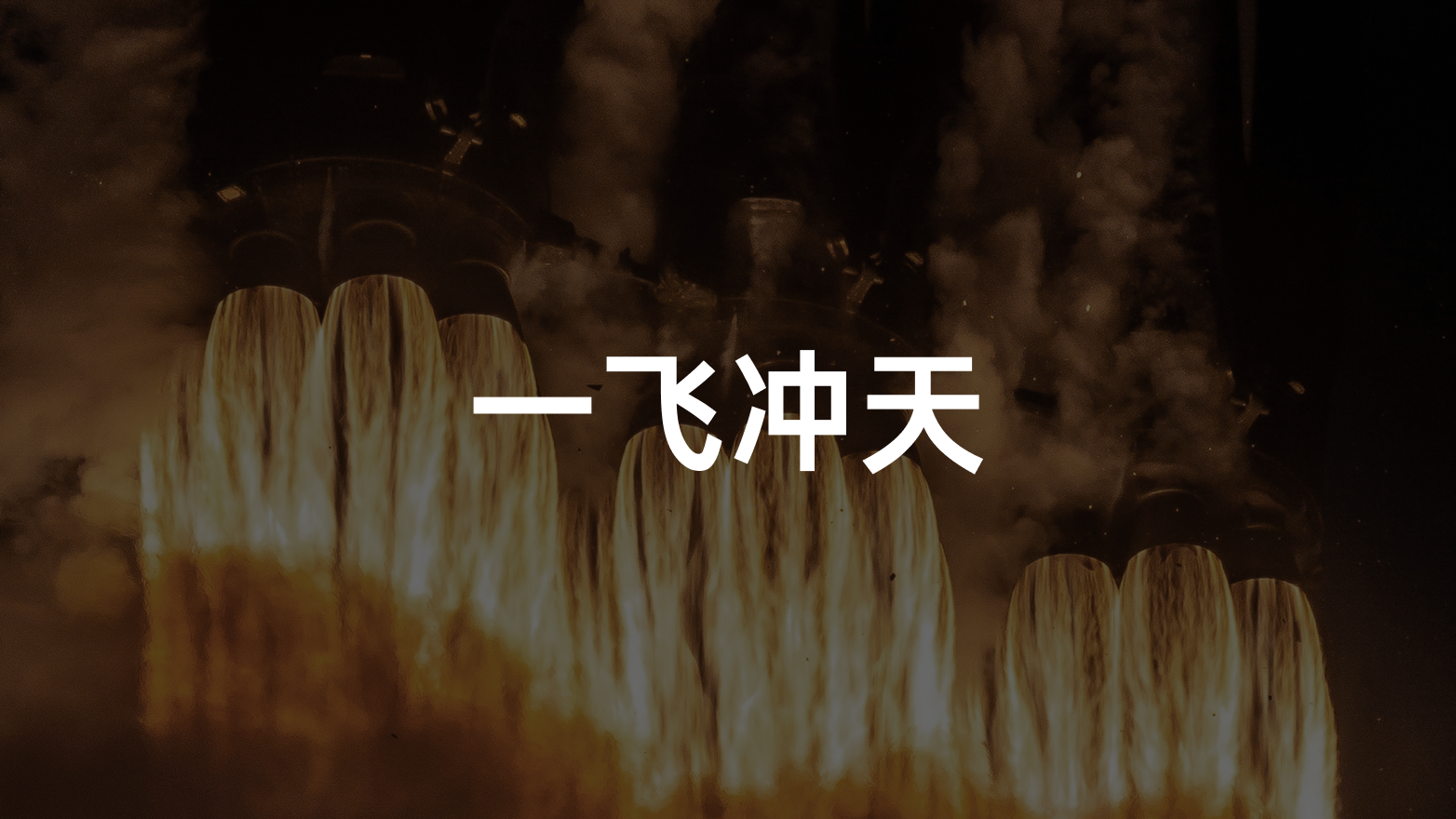Our attitude towards Huawei consists of 80% learning, 20% respect, and 0% complaints.
During a conference call following the release of third-quarter financial results, LI Auto CEO Li Xiang expressed his humility in dealing with Huawei competition with the above phrase, even though LI Auto had just released its best financial performance since going public.
Indeed, in this revolution of electrification and intelligent technology in the automobile industry, the Chinese automotive industry has never felt the influence of the technology giant Huawei more profoundly, giving it due attention and awe.
Especially at the end of November, when Huawei chose to spin off its smart car solution business into a new company, the whole automotive circle saw clearly and recognized the important role that Huawei is going to play in the revolution of Chinese automotive technology while causing a huge public opinion wave.
It can be said that presently, Huawei, indeed, holds an unrivaled position and momentum in the automotive industry.
However, for Huawei, such momentum is not a given — in fact, before reaching today’s heights, Huawei has gone through a painful and arduous journey and exploration process in the automotive industry for quite a long time.
The Immense Pressure on Yu Chengdong
In early February 2023, a picture closely related to Huawei’s intelligent car solution caused a lot of speculation when it went viral online.
The picture shows Yu Chengdong, executive director, consumer BG CEO, and intelligent car solution BU (hereafter referred to as “car BU”) CEO of Huawei at the time, visiting Avatr Tech’s new car with Tan Benhong, chairman, and CEO of Avatr Tech. Also present was Huawei’s rotating chairman Xu Zhijun — interestingly, this was the first time Xu Zhijun and Yu Chengdong simultaneously appeared publicly at an event related to Huawei’s intelligent car solution business.
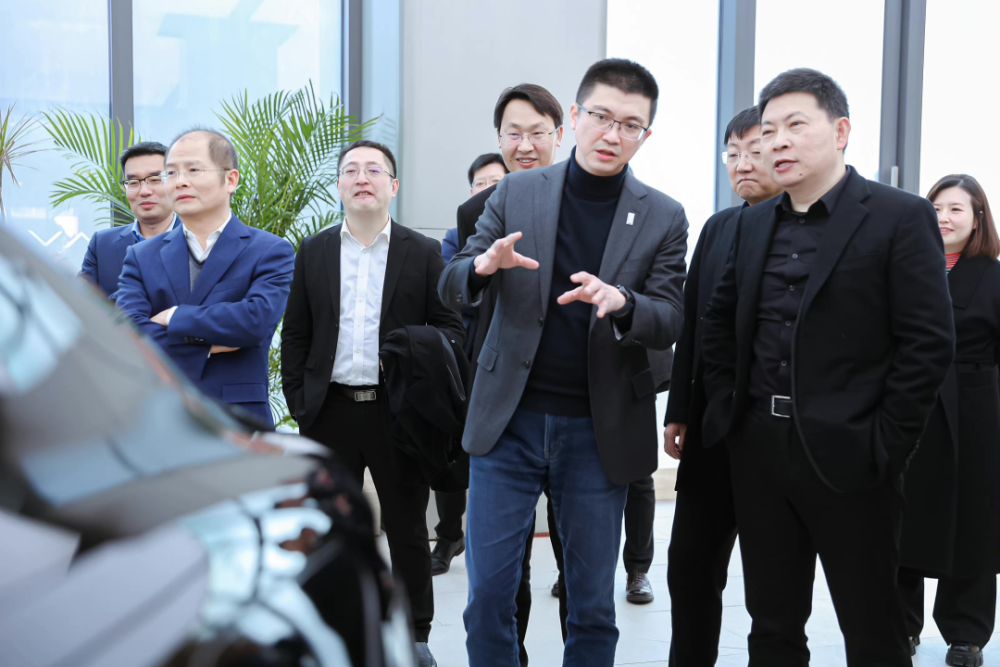
Actually, at the same time as this picture was fermenting on the web, there was a significant personnel change in Huawei’s car BU — Wang Jun was suspended.
Before the picture appeared, the news of Wang Jun’s suspension had been fermenting online for some time. Some analysis suggested that it was because the HI mode business he oversaw did not meet expectations. However, with the release of the above photo and subsequent sporadic responses from Huawei personnel via media channels, Wang Jun’s suspension was gradually confirmed. This personnel adjustment was interpreted by the outside world as Yu Chengdong finally being able to unify the management of all the business sectors of the car BU.
However, from the perspective of the overall context at the time, this seemingly beneficial personnel change for Yu Chengdong to carry out his business, in fact, amplified the immense pressure Yu Chengdong had been bearing due to Huawei’s car-related business to the extreme.
The reason is that at the time, both the HI mode pushed by Huawei’s car BU and the smart car selection mode that Yu Chengdong had been personally undertaking had been performing particularly poorly.Let’s start with the HI mode.
In May 2022, after repeated delays of over a year, the first ARCFOX Alpha S Huawei HI Edition using the HI mode officially went on sale. However, since deliveries began in July 2022, it has remained unnoticed. ARCFOX has never publicised the sales of this model and was instead reported to have suffered losses, even just achieving a dismal sales of 400 units in January 2023.
Another model adopting the HI mode, the avatr 11, wasn’t delivered until December 2022 after being released in August. By February 5, 2023, delivery volume of avatr 11 only broke through 2,000 units – better than the ARCFOX Alpha S Huawei HI Edition, but clearly, against the massive investments and the resulting huge losses made in the HI mode by Huawei Car BU, these delivery figures seemed trivial. Finally, the GAC even gave up on the collaboration with Huawei on the HI mode and chose other ways of collaboration.
However, compared to HI mode, the Wisdom Selection Car Mode that Yu Chengdong has been vigorously promoting put even more pressure on him.
The reason being, AITO, which adopts the Wisdom Selection Car Mode, did not perform well in overall sales at the time.
To begin with, AITO was doing pretty well. The first model, AITO M5, quickly scaled up after rapid delivery in March 2022, and after the launch of AITO M7, it quickly boosted the total sales of the brand to over 10,000 in August that year, reaching a new high of 12,018 in October.

However, things started to change in November – for various reasons, AITO saw a huge month-on-month slump of 31.37% in sales for the month. During the same month, the crash test for AITO M7 released in the test report by CIRI raised doubts about the quality of the AITO series. In December, although the delivery volume of the AITO series once again exceeded 10,000, it was perceived by the outside world as a result of the rush for volume before the end of the new energy subsidy in 2022, and does not represent the brand’s real market performance.
Moving into 2023, the situation for AITO worsened. Especially in January 2023, AITO’s sales hit a record low, only 4,475 units, a drop of more than 50% month-on-month, a drastic fall referred to as ‘halving’. In this case, the reputation of the AITO brand took a hard hit, and critics had their share of voices in public discourse.
Now, all the pressure was on Yu Chengdong.
After all, on one hand, Huawei has been vigorously promoting the HI mode, which in essence has been executed and promoted by Wang Jun over the long term. However, before being suspended, Wang Jun also reported to Yu Chengdong. As CEO of Huawei Car BU, Yu Chengdong has to take responsibility for the BU’s losses.On the other hand, under the “Smart Choice” mode, Yu Chengdong has always been high-profile in supporting the “Smart Choice” mode and the AITO brand. He also simultaneously used Huawei’s vehicle BU and terminal BU capabilities in vehicle definition, sales, channels and so forth. This implies that the sluggish sales of AITO brand in early 2023 could easily be interpreted as Yu Chengdong’s incompetence, triggering external doubts about him.
Hence, in early February 2023, when Yu Chengdong and Xu Zhijun stood on the stage together for avatr, Yu Chengdong was actually under immense pressure – how to break the business and sales predicament then became a critical issue he had to face.
Breaking through the “Invisible Wall”
Promptly, Yu Chengdong took his vital step to break the deadlock.
On February 25, 2023, witnessed by Yu Chengdong and Zhang Xinghai, SERES and Huawei signed a joint business deepening cooperation agreement in Shenzhen. According to the agreement, both parties decided to collaborate on launching a new platform, with the first flagship vehicle under the new platform equipped with high-level intelligent driving system – simultaneously, in the cooperative models, Huawei’s terminal will fully exert advantages including high-level intelligent driving, Harmony cockpit, and user-experience design, etc.
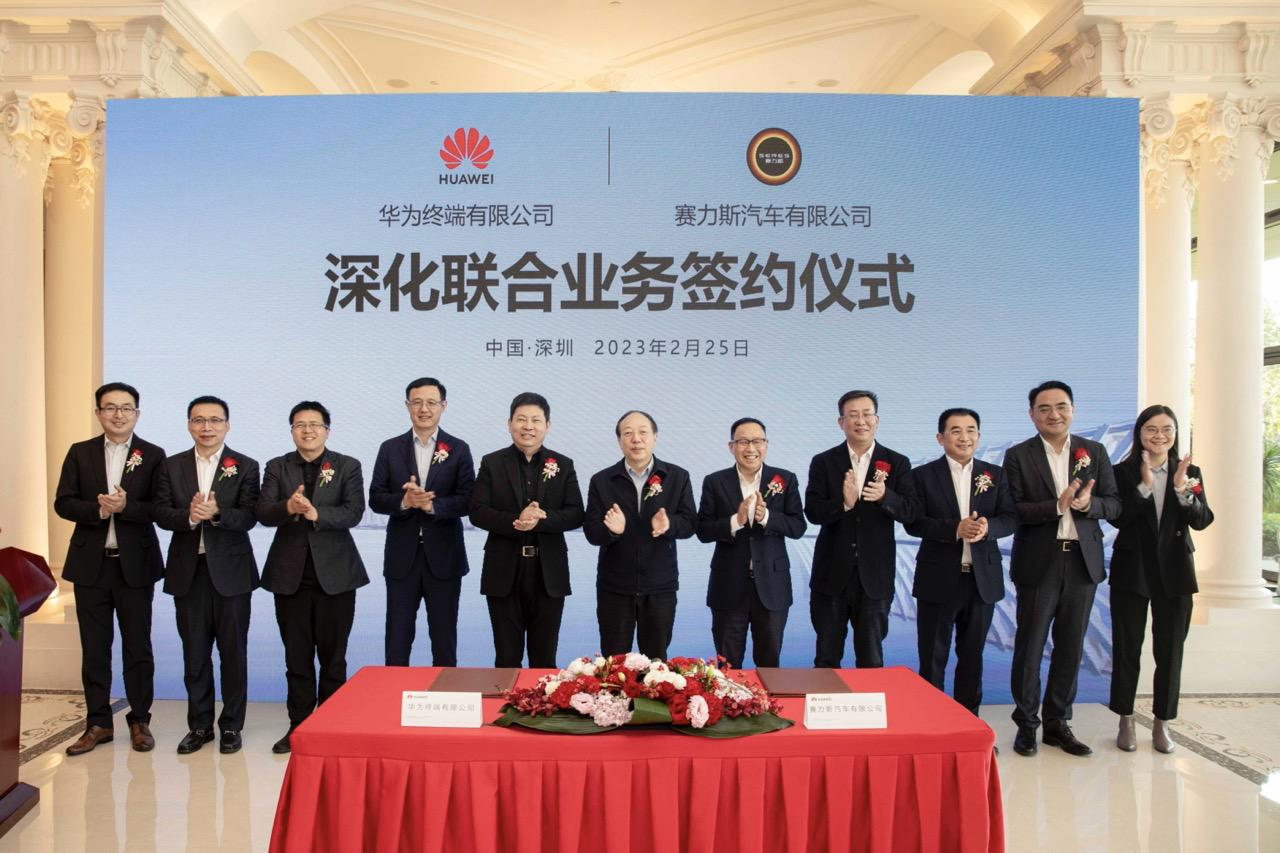
The significance of this cooperation agreement is that the “Smart Choice” mode, which Yu Chengdong strongly promotes, finally receives the empowerment of Huawei’s high-level intelligent driving system.
This was no easy task – in fact, it might be the toughest and most significant challenge that Yu Chengdong has taken on in pushing forward Huawei’s intelligent vehicle-related businesses.
The reason is closely related to the “Two-legged” strategy Huawei adopted in intelligent vehicle-related business.
In fact, even before the Shanghai Auto Show in April 2021, based on the concept of Huawei not making cars but helping car manufacturers make good cars, Huawei’s rotating chairman, Xu Zhijun, announced the three partners of the Huawei HI model, namely BAIC, CCAG and GAC. He also emphasized that only vehicles equipped with Huawei’s high-level intelligent driving solution could get the HI logo – this model essentially defines Huawei as a To B intelligent solution provider for car companies, with Wang Jun, then serving as the president of Huawei’s vehicle BU, as the responsible person.
However, during the Shanghai Auto Show in 2021, Yu Chengdong, Huawei’s consumer business CEO, appeared at the SERES booth and launched the SERES SF5 Huawei Smart Choice version, which features the HUAWEI DriveONE three-in-one electric drive system, and exhibited and sold it in Huawei’s consumer stores. This is the “Smart Choice” mode led by Yu Chengdong.
A background is that Yu Chengdong cooperates with SERES on the “Smart Choice” mode mainly because, after Huawei’s mobile phone business was suppressed, he became a firm car leader within Huawei. He also needed to keep part of the terminal stores operating by selling cars and to create a business loop – but due to Huawei’s repeated announcements of not making cars, he launched the “Smart Choice” mode as a workaround.Subsequently, Chengdong Yu was appointed as the CEO of Huawei’s Car BU in May 2021, and Jun Wang was transitioned from the president of Car BU to serve as the COO of Car BU and the president of the Intelligent Driving Solution Product Line—reporting directly to Chengdong Yu. However, practically speaking, Chengdong Yu devoted a significant portion of his energy toward the Intelligent Selection Vehicle business, unveiling the AITO series of vehicles, while Jun Wang continuously pursued the HI mode by collaborating with automobile companies.
Interestingly, till February 2023, the Intelligent Choice Vehicle mode led by Chengdong Yu and the HI mode led by Jun Wang operated independently—despite Chengdong Yu serving concurrently as the CEO of Car BU, he could not directly intervene in the operations of the HI mode. They managed separately, without interfering, as though an “invisible wall” existed between them.
This, to a certain extent, hindered AITO.
After all, in 2022, under the collaboration of Huawei and SERES, the AITO M5, AITO M7, and AITO M5 EV, have incorporated numerous Huawei elements from interior to exterior, such as car body design, the Harmony OS car computer operating system which is highly interconnected with Huawei mobile phones, HUAWEI Sound audio system, Huawei’s Drive ONE three-in-one electric drive system, etc., making these models the ones with the highest “Huawei content” on the market.
Regrettably, with respect to intelligent driving, these three models use the solutions provided by suppliers like Bosch, rather than Huawei’s proprietary intelligent driving system. In simpler terms, AITO did not receive the “soul” empowerment from Huawei’s Car BU. Consequently, the AITO series, which adopted solutions from suppliers like Bosch, faced difficulties facing off against models from LI Auto, Tesla, and other automobile companies on the ever-increasingly focused field of intelligent driving.
One might even assert that in 2022, AITO models had absolutely no competitive edge in terms of intelligent driving.
Such dismal performances in intelligent driving, along with the public opinion crisis triggered by AITO M7’s crash test and issues concerning AITO’s pricing, channels, etc., have substantially weakened AITO’s market competitiveness. Thus, amid the overall context of Tesla’s consecutive price cuts in October last year and January this year, igniting a price war—a few price reductions by AITO had minimal impact and consequently failed to alter the drastic sales slump in January this year.
Worth noting is that amid AITO’s underwhelming market performance, Chengdong Yu had tried to boost AITO vehicle sales early this year by using the “HUAWEI AITO” brand label, and he had also intended to facilitate branding and marketing for other forthcoming Intelligent Choice Vehicle collaboration projects. Much to his disappointment, under the uncompromising principle of “Huawei does not manufacture cars,” this practice was swiftly halted by Huawei’s top management, leaving Chengdong Yu to express his dismay on Huawei’s Heart Voice Community.
Under such circumstances, Chengdong Yu indeed had a strong motivation to contemplate how to enhance AITO product value and market competitiveness. A key step was, without a doubt, to empower Intelligent Selection Vehicle operation using Huawei’s high-order intelligent driving. Therefore, Jun Wang’s suspension in February 2023 marked Chengdong Yu’s initiation to genuinely steer the development of Car BU business, ultimately leading to the external announcement on the cooperation between Huawei’s high-level intelligent driving and SERES.In other words, the ‘invisible wall’ has finally been broken through by Yu Chengdong.
When Huawei ADS Meets AITO
Following on, the critical challenge for Yu Chengdong is how to empower AITO’s sales with Huawei’s advanced intelligent driving capabilities, going from HI mode to Zhixuan car mode.
In hindsight, to solve this problem, Yu Chengdong and his team adopted a two-step strategy.
The first step was to make the Huawei Autonomous Driving Solution (ADS) more cost-effective.
In fact, in the HI mode used by Huawei’s autonomous driving solution, the MDC 810 + triple LiDAR hardware package was adopted. The BOM cost of the hardware alone reached a level of 40,000 yuan. This resulted in higher overall pricing for vehicles such as the ARCFOX Alpha S Huawei HI version and avatr 11, which adopted the HI mode, and therefore wasn’t accepted by the general consumers.
As such, if Huawei’s high-level autonomous driving solution is to reach ordinary consumers via the brand AITO, cost effectiveness must be improved.
Background context is that when Huawei rolled out HI Mode in late 2020, the entire autonomous driving industry was still in the stage of exploring technological trajectories and algorithmic architectures, so, to ensure technological implementation and safety, Huawei’s first-generation ADS solution adopted a strategy of high computing power + strong perception. In particular, a high-cost solution was implemented with the MDC 810 computational platform + triple LiDAR.
Fortunately, by the end of 2022, thanks to the demonstration effect of Tesla’s AI Day, BEVformer bestows the industry with a new technical paradigm while in pursuit of commercialization. It is more efficient in computational power; furthermore, Tesla’s occupancy grid solution, based on BEVformer, serves as a substitute for LiDAR to some extent. It is also adopted by domestic contemporaries.
This technological evolution paves the way for Huawei ADS to be more cost-effective in computational and perceptual hardware.
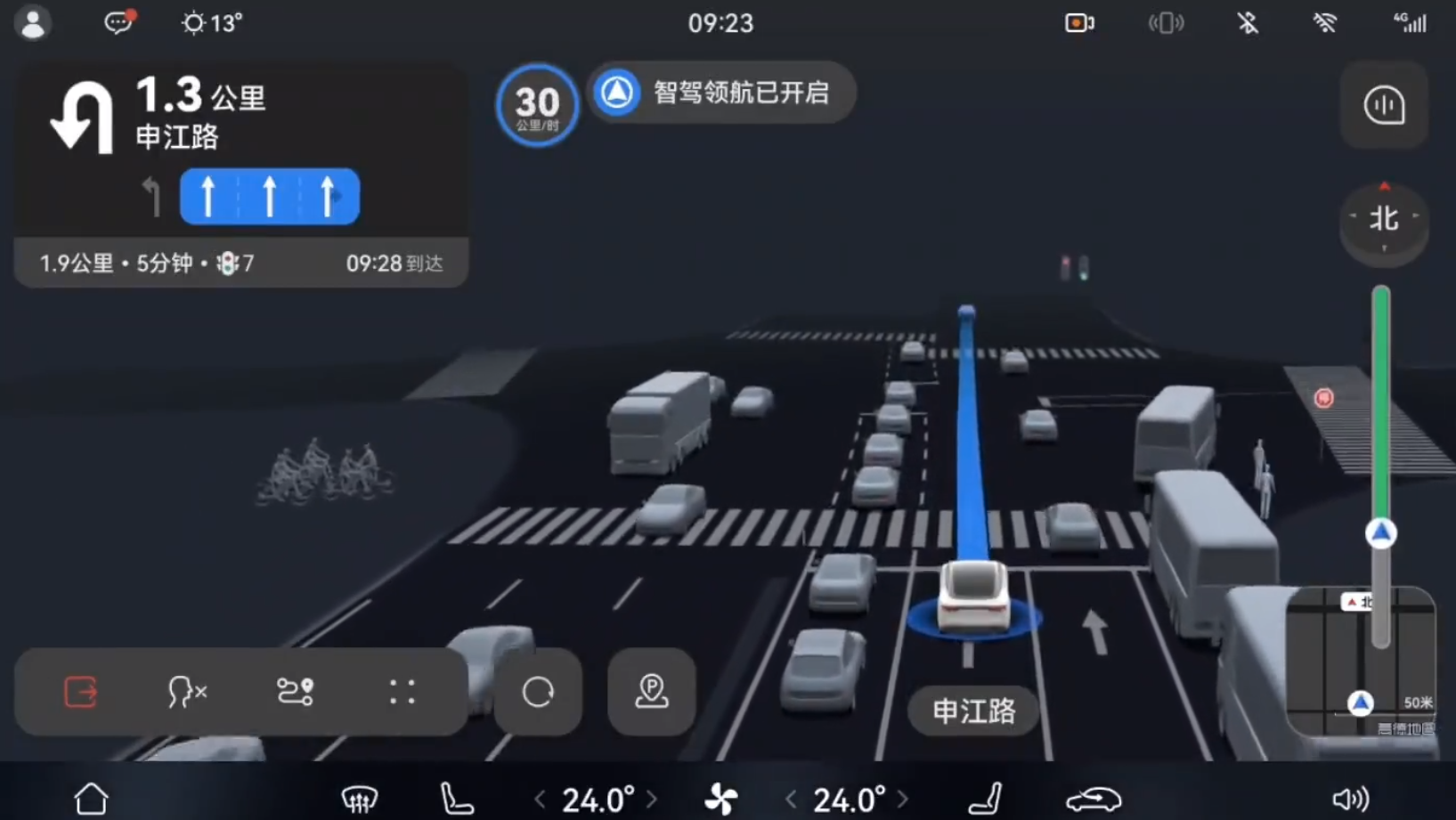
Consequently, on April 16th, when Huawei ADS 2.0 was officially launched, its solutions, costs, etc., were totally unalike from the first generation ADS.
Specifically, in terms of hardware configuration, Huawei ADS 2.0 had two fewer LiDARs, was not dependent on high-precision maps, and used the MDC 610 plan, whose computational tier and cost were lower than MDC 810.
However, in terms of software algorithm architecture, Huawei ADS 2.0 adopted the industry-first GOD network. It integrates information from LiDAR perception, enabling recognition of universal obstacles such as cognac barrels and piles of dirt. Additionally, Huawei has included in ADS 2.0 a road topology inference network and other elements to match navigational maps with the real world.Overall, through a series of AI innovations in software algorithm architecture and perception, planning, and decision-making, Huawei’s ADS 2.0 has successfully achieved cost reduction and efficiency improvement for intelligent driving solutions without sacrificing actual user experience.
Thusly, the more cost-effective ADS 2.0 was able to make its debut on the AITO M5 Intelligent Drive version launched on April 17th at a more reasonable cost.
The second step taken by Yu Chengdong was to promote Huawei ADS 2.0.
In fact, at the AITO M5 Intelligent Drive version conference on April 17th, Yu Chengdong’s promotion of ADS 2.0 was extremely high-profile, but also very strategic – Yu Chengdong’s promotion of ADS 2.0 was not only directed at the industry, but also targeted at ordinary consumers.
For instance, within the industry dimension, Yu Chengdong formally announced the following two points of interest and discussion:
- Huawei’s ADS 2.0 is L2.999… level, infinitely close to the high-level intelligent driving of L3;
- By the fourth quarter of this year, Huawei will launch high-level intelligent driving not dependent on highly precise maps in 45 cities.
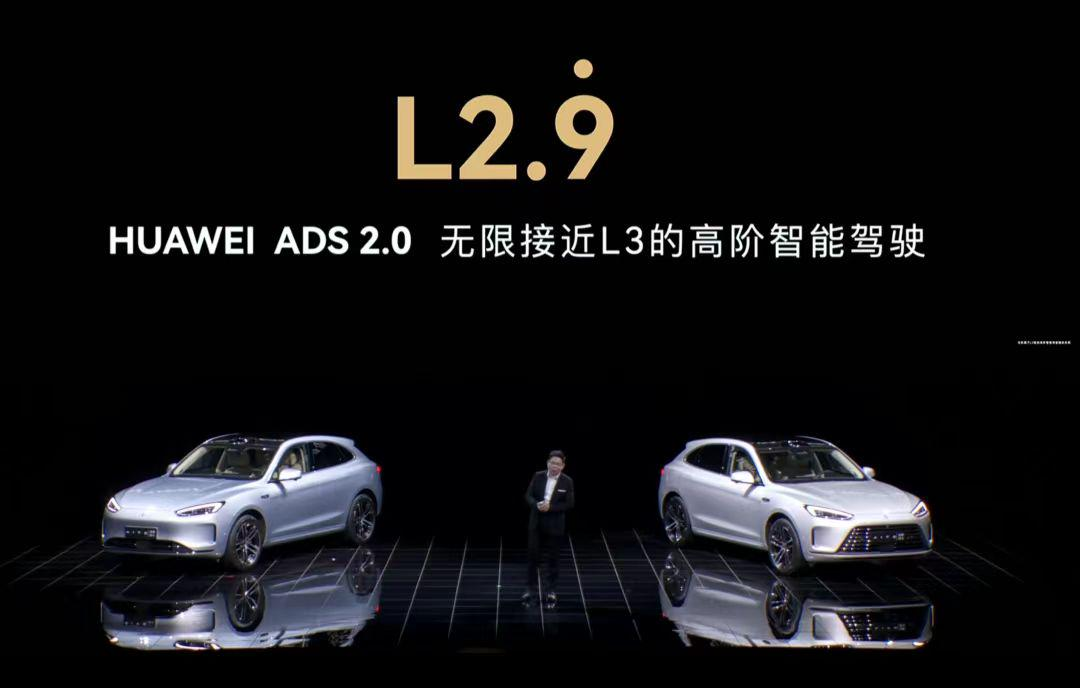
However, in terms of consumer-facing promotion strategies, Yu Chengdong targeted the point of ‘safety’ that ordinary users care about the most, emphasizing repeatedly on the effects of AITO M5 Intelligent Drive version in AEB (Automatic Emergency Braking), which included the ability to identify and make an emergency brake for pedestrians falling down at 50 km/h.
Yu Chengdong emphasized that even in manual driving mode, the AEB based on Huawei ADS 2.0 could operate at any time, realizing the effect of ‘safer manual driving’ – proven by facts, this aspect hit the pain point of many consumers who are easily distracted while driving.
Aside from Yu Chengdong’s strong promotion at the launch, after the AITO M5 Intelligent Drive version officially began delivery in June, AITO adjusted its sales end, established a more unified management system of sales and service team, and started promotion in ways noticeably perceived by ordinary consumers, for example, live broadcasts of the performance of AITO M5 Intelligent Drive version on some platforms – which significantly boosted ordinary users’ confidence in Huawei’s intelligent driving.
Simultaneously, based on the effect of ADS 2.0, some of Huawei’s loyal fans who care about the development of the intelligent driving industry began to share their own short vlogs of experiencing Huawei’s high-level intelligent driving functions on online video platforms. One highly viral typical video was ‘driving automatically at 100 km/h on a rainy day through cement width-limiting piles’. The release of this slightly ostentatious video enabled many users with no perception of intelligent driving to truly perceive Huawei’s capabilities in intelligent driving.
On the other hand, due to the focus on the development of the intelligent driving industry and Huawei’s capabilities, various media paid close attention to ‘Huawei’, ‘Huawei ADS 2.0’, ‘not dependent on highly precise maps’, etc., and Huawei ADS almost became a traffic password to some extent. Some media also conducted intensive tests and live broadcasts on Huawei ADS 2.0, which not only popularized intelligent driving to a certain extent, but also objectively promoted Huawei ADS 2.0.Thus, throughout months of brewing public opinion, the capabilities and advantages of Huawei’s Intelligent Drive have gradually captured the cognitive landscape of users — it’s merely an inch away from bolstering the sales of AITO brand vehicles.
「It’s hard to make a comeback」
Regarding the AITO M5 Intelligent Drive edition, one very clear fact is this: it’s a product empowered by Huawei’s ADS 2.0 Intelligent Drive, but it is not a best-selling vehicle, nor has it been able to effectively support the sales of AITO brand this year. As of August this year, the sales of AITO brand were only 5,018 units, less than half of the same period last year.
Indeed, for an intelligent electric vehicle, the smart driving tech is the essence, but having this alone is insufficient.
At this juncture, Yu Chengdong desperately needed a best-selling AITO model to prove his worth.
The reasons are multifold. On one hand, the Huawei Intelligent Vehicle Solution BU which Yu Chengdong is responsible for, has been suffering losses for too long. Moreover, by the end of 2023, the losses are increasing and needs a vehicle with enough volume to dilute the cost. On the other hand, although the AITO M5 equipped with Huawei’s Intelligent Drive, it failed in terms of sales. If the situation can’t be turned around with subsequent models, it will inevitably damage the reputation of Huawei’s Intelligent Drive.
More importantly, by the second half of 2023, the entire new energy automobile market is getting more competitive, the Matthew effect is getting stronger, leaving lesser space for weaker brands to survive.
In this context, the follow-up to the AITO M5 Intelligent Drive edition, which later became known as the new AITO M7, is destined to play a crucial role — if it fails in sales again, it could even affect the survival of the entire AITO brand and Huawei’s car selection model.
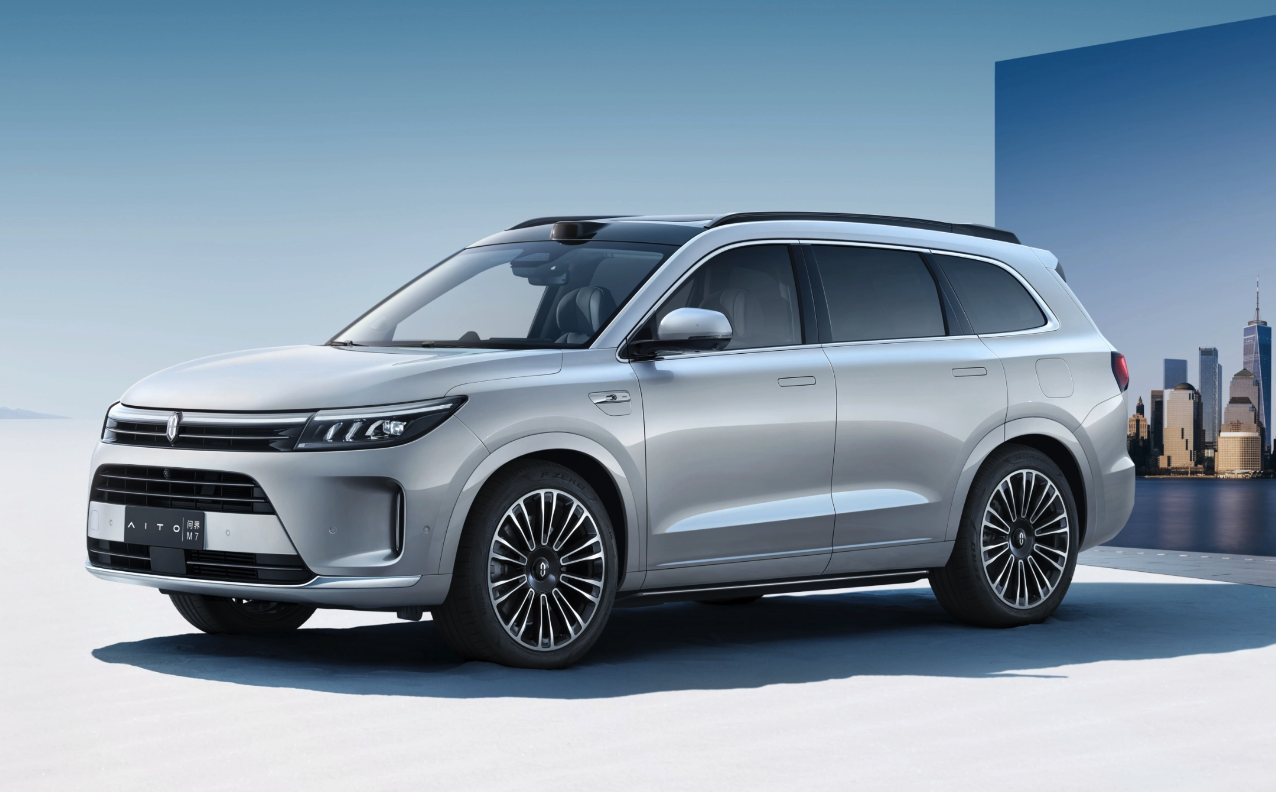
Therefore, to make the new AITO M7 a blockbuster, Yu Chengdong and the Huawei team he led have put a lot of effort into all aspects. Of course, the focal point is investing 500 million to thoroughly boost the product, specifically:
- Improve the proportion of high-strength steel, aluminum alloy and hot-formed steel in response to problems arising from crash test in November of last year, significantly strengthening the rigidity of the vehicle.
- Complying with the market demand for larger five-seat SUVs, they added a version of the large five-seater and increased the effective space inside the vehicle to 3.3 meters (10.8 ft).
- Adopted Huawei DATS 2.0 technology to offer a more comfortable ride.
- In terms of intelligent driving capabilities, the GOD network in ADS 2.0 has been upgraded to version 2.0, enabling AEB stop at 90 km/h.
In general, on the basis of the original product, new AITO M7 has strived to make up for its deficiencies and lengthen its advantages.
Of course, aside from product strength, the new AITO M7 made a significant price cut, dropping the starting price from the old model’s ¥289,800 to ¥249,800. The ¥40,000 starting price reduction makes the new AITO M7 incredibly competitive and enticing. With such product strength and price, the new AITO M7 now possesses the potential to become a best-seller.But it’s still not enough —— In addition to the outstanding product and price, the new AITO M7 has received an unprecedented promotional boost.
This is an extremely precise marketing operation.
On August 29, 2023, the Huawei Mate60 series smartphones quietly went on sale on the official website without much fanfare. The Kirin 9000S chip it carries has, under the severe pressure from the US and the domestic search for technological breakthrough, helped Huawei achieve unprecedented attention and emotional support for a while.
By the Huawei press conference on September 12, while everyone else was focused on the Mate60 phone, Yu Chengdong took the opportunity to launch the new AITO M7, delivering details including its product capabilities like AEB and pricing clearly to everyone paying attention to the conference.
For a moment, with the strong momentum of Huawei at this moment, the new AITO M7 has achieved an unprecedented outburst of voice.
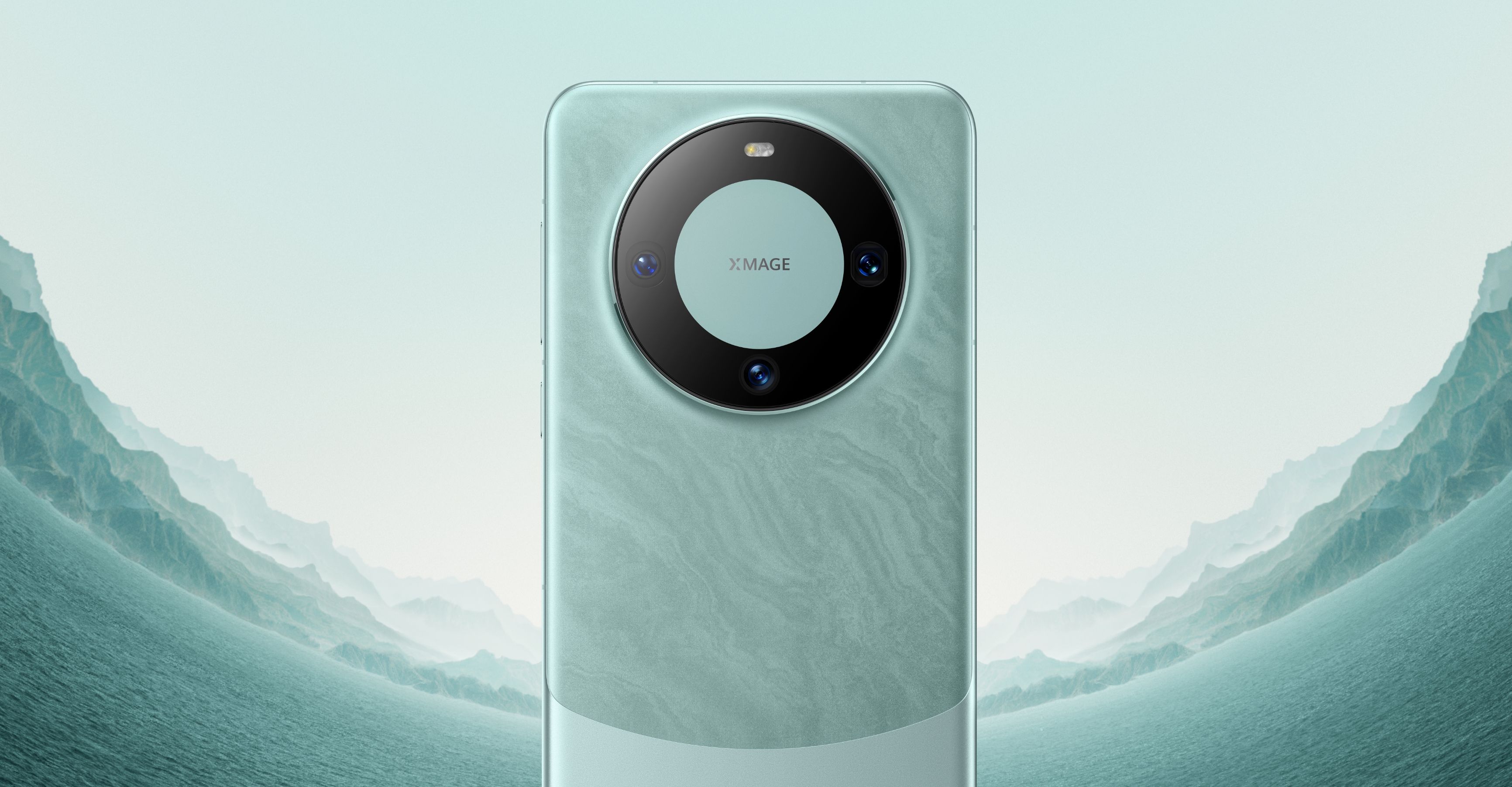
Perhaps it was no accident, the launch of the new AITO M7 coincidentally fell during the busy season of the auto market known as “Golden September and Silver October”. Therefore, after the release on September 12, the new AITO M7 began to take off rapidly, reaching a daily reservation volume of 1500 units, by September 30, the cumulative reservation order of the new AITO M7 had exceeded 30,000 units.
During the National Day holiday, the new AITO M7 took advantage of the momentum, securing 20,000 reservation orders in just seven days of the holiday, including over 7,000 reservation orders in a single day on October 6 —— This led to a breakthrough of 50,000 reservation orders by October 8 for the new AITO M7, less than a month after its launch, a sales record unprecedented in China’s new energy vehicle industry.
Thus, the new AITO M7, sold out.
For this achievement, Yu Chengdong has mixed feelings, stating in his circle of friends: “Reviving from death, it’s not easy”.
In the following two months, the reservation volume of the new AITO M7 has slowed down, but it continues to refresh its own reservation order volume at an enviable speed. Until November 27, two and a half months after the launch, Yu Chengdong announced that the reservation order volume of the new AITO M7 has broken through 100,000 units —— This record-breaking order volume once again demonstrates Huawei’s capabilities to the entire automotive industry.
It’s worth mentioning that, against the hot backdrop of the new AITO M7, the yet-to-be-released new AITO M9 has also received extremely high attention, with pre-sale orders already exceeding 30,000 units.
This time, no one questioned Yu Chengdong and his commitment to Huawei’s smart choice car model anymore.
The Reconstructed Business Closed Loop
Interestingly, just the day before Yu Chengdong announced the 100,000 reservations for the new AITO M7, Huawei chose a slightly less media attention Sunday to release a heavy news that caught the eye of the entire Chinese auto industry.The translation: Huawei plans to establish a new company focused on the research, development, production, sales and services of intelligent driving systems and incremental components for connected cars.
According to an official announcement by Huawei, the company intends to integrate the core technologies and resources of its intelligent vehicle solution business into the new company with Chang’an Automobile and its affiliates expressing interest in investing in it. Simultaneously, the new company aims to become a global leader in the industry of automotive intelligent driving systems and components while serving as an open platform for the automotive industry. The company will also open its equity to current strategic partners, car manufacturers and investors with strategic value, hence making it a diversified company.
In essence, through this collaboration, Huawei is spinning off its Vehicle BU from Huawei’s original system and opening it up for Chang’an Automobile and other automakers to invest in.
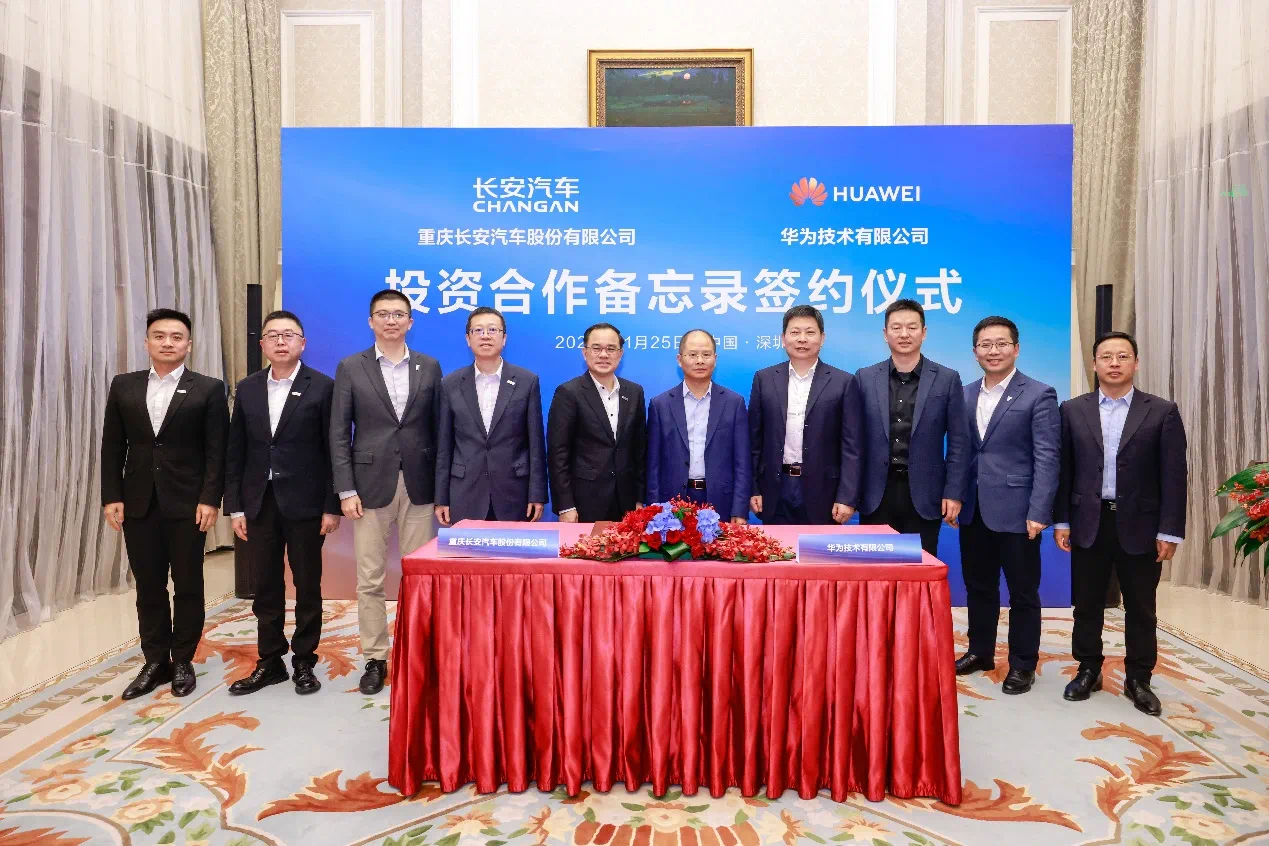
Clearly, with this move, Huawei intends to change the long-term loss-making situation of the Vehicle BU by introducing other automotive shareholders. On the other hand, this dynamic is also a testament to Huawei’s determination of “not manufacturing cars” while using this strategy to attract more automakers for collaboration and promote China’s transition to intelligent vehicles.
After all, as Yu Chengdong said, China needs to build an open platform powered by the joint participation of the automotive industry. Clearly, Yu Chengdong’s “locomotive” is the new company established by Huawei.
However, behind the spin-off of Vehicle BU by Huawei, a fact cannot be ignored: the “locomotive” can be recognized by other automakers largely due to the branding success of AITO, especially the impressive sales of AITO’s new M7. In fact, with the success of AITO’s new M7, Yu Chengdong not only demonstrated the feasibility and value of the smart choice car model but also verified the strong technical support that Huawei’s Vehicle BU can provide.
To some extent, AITO’s new M7 played the role of the “ignition engine” in this “locomotive”.
It is important to note that before announcing the spin-off of Vehicle BU, Huawei had already upgraded the smart choice car model. Huawei’s previous cooperations with SERES, Chery, JAC, BAIC, etc., have been upgraded to the “HarmonyOs Driving”. Under HarmonyOs Driving, all cooperating models are branded with AITO, LUXEED etc. LUXEED S7 is the newest model in this collaboration.
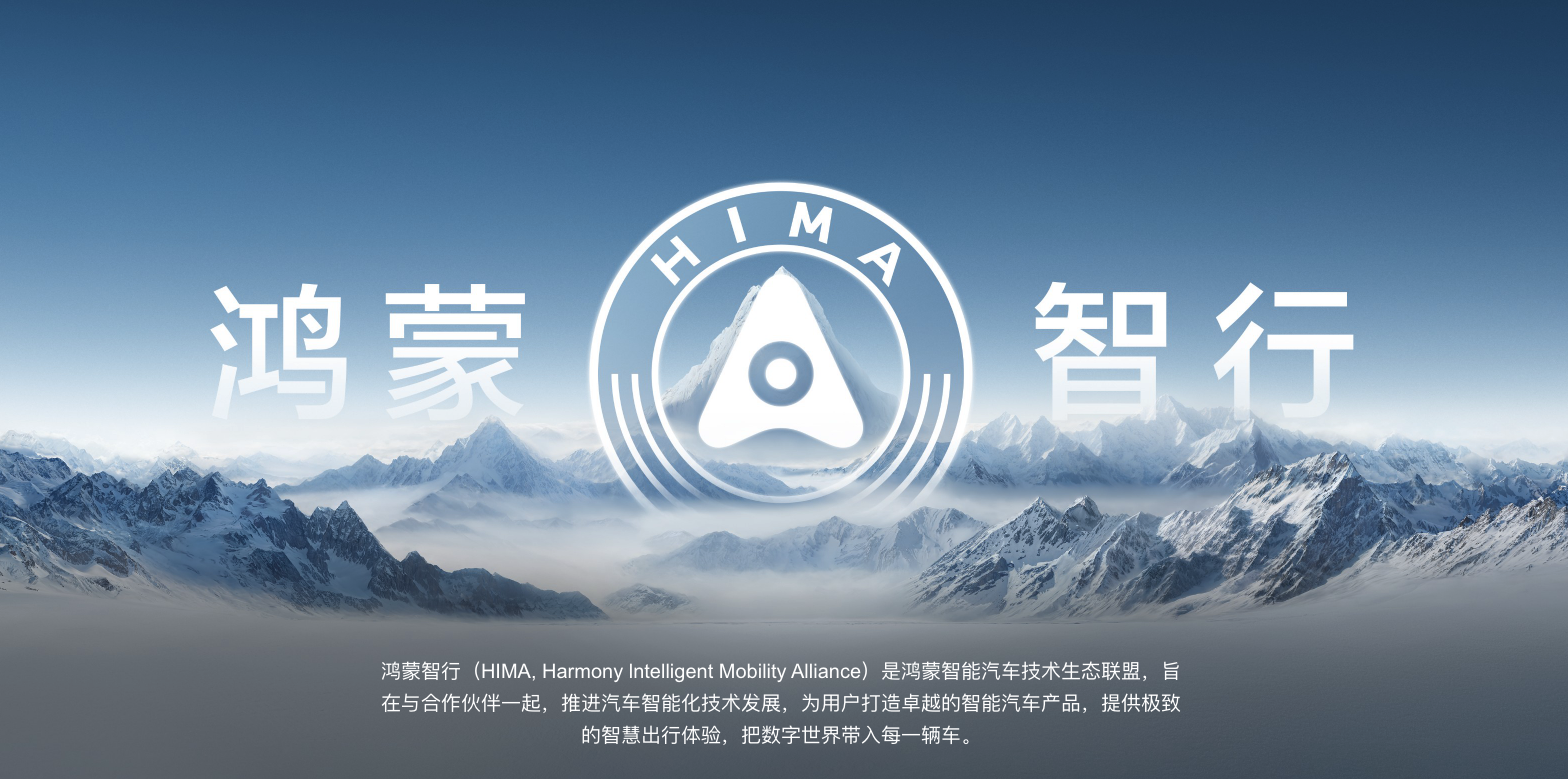
So, with the successful turning point of AITO M7, Huawei has formed two new business models in the Chinese automotive industry.
The first is the To B model. It provides the entire automotive industry with empowerment through Huawei’s technologies, including advanced intelligent driving, with the new company soon to be established by Huawei. And it allows automakers to invest in it. This company will play the role of the “base of Chinese automotive intelligence”. In this role, the new company becomes an important link in the upstream and downstream supply chains of the intelligent vehicle industry.The second one is the To C model. Represented by “HarmonyOS Intelligent Travel”, this model operates through the in-depth cooperation between Huawei’s terminal system and automakers, along with the technological empowerment from the aforementioned new companies. It aims to provide consumers with comprehensive automotive services, thus forming a complete business loop. Undoubtedly, Richard Yu will continue to lead this business loop forward.
Moreover, because of Huawei’s massive size and attention, these two models will influence and empower each other.
In other words, whether it’s To B or To C, under the entirely new business model, Huawei has become an indispensable key player in China’s auto industry’s transition to electrification and intelligence.
It should be noted that in Huawei’s extensive layout for the automobile industry, in addition to the widely known technologies like Huawei’s advanced intelligent driving (ADS 2.0), HarmonyOS cockpit, HUAWEI Sound, there are also technologies from the Pangu big model, Car-borne light, Huawei electric drive, chassis, Huawei digital energy, Huawei auto cloud and many more. These technologies will gradually reach ordinary consumers through the empowerment of the above two business models.
Worth mentioning is that these many technologies from the Huawei system will debut on the AITO M9, known as the “Tech Auto King”.
If Not Flying Then Soaring
Looking at Huawei’s journey into the smart electric vehicle industry, we discover that even a diversified technology giant like Huawei had made many mistakes and experienced numerous failures when entering into a new industry, and has been widely questioned and mocked along the way – as Richard Yu said in a public event, “we took many detours”.
In fact, during this process, the models that adopted the Huawei HI mode have suffered from dismal sales for a long time. Huawei’s Smart Selection car business has repeatedly fallen into failure and been decryed by the public – SERES SF5 Huawei Smart Selection was obscure in 2021, AITO M7 had a fatal flaw in November’s crash test last year, and AITO brand’s sales figures “halved” in January this year…
These repeated failures pushed the AITO brand almost into a “deadlock”.
Even in August, when the new AITO M7 began to warm up, no one could predict that in the next three to four months, the new AITO M7 would become a hit, and Huawei’s momentum and position in the intelligent auto industry would skyrocket.
This process mirrors what happened on the other side of the ocean with SpaceX – from 2006 to 2008, SpaceX’s “Falcon 1” had already undergone three failed launches, exhausting all funds and leaving Elon Musk at the end of his tether; but finally, on September 28, 2008, during the fourth launch, SpaceX successfully launched the “Falcon 1” rocket – bringing SpaceX back from the brink of death.
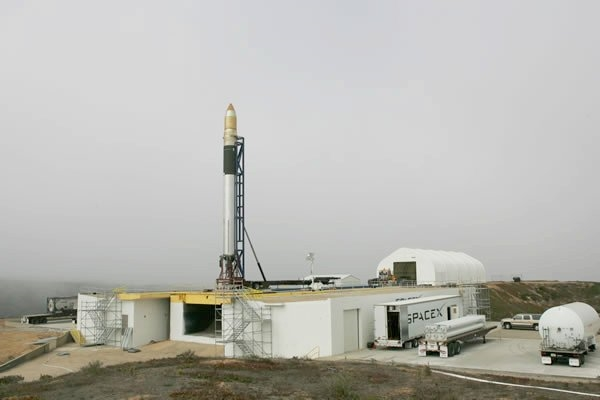 Yu Chengdong is certainly not Musk, and Huawei is different from SpaceX. But in the process of leading Huawei’s Vehicle BU and Terminal BU to advance in the automotive industry, he has also experienced moments reminiscent of the proverbial ‘desperate times.’ The AITO new M7 is their last-ditch effort after all their hard works.
Yu Chengdong is certainly not Musk, and Huawei is different from SpaceX. But in the process of leading Huawei’s Vehicle BU and Terminal BU to advance in the automotive industry, he has also experienced moments reminiscent of the proverbial ‘desperate times.’ The AITO new M7 is their last-ditch effort after all their hard works.
From this perspective, we perhaps understand better why Yu Chengdong sighed a sigh that is often incomprehensible to outsiders when the AITO new M7 pre-orders broke 50,000: resurrecting from near death is truly not easy.
In contrast, each of the first three failures of the ‘Falcon 1’ was paving the way for a successful fourth launch; similarly, each failure of Huawei after entering the automotive industry, and the previous failures of various AITO car models (for instance, poor sales of AITO M5 Smart Drive Edition, but it laid a crucial foundation for the popularity of Huawei’s smart driving) were powering up for the launch of the AITO new M7.
It’s worth mentioning that during this process, even the Mate60 series has become a key ‘booster’ in the rise of the AITO new M7.
For the breakout of the AITO new M7, the super national attention brought by Mate60 experienced a similar phenomenon as SpaceX shifting high influence and attention it gained from Falcon Rocket to Tesla via Musk, forming the dimensional-reduction brand marketing facing the automobile industry —— its popularity is enough to cross circles and reach more ordinary consumers.
So, from the perspective of Huawei as a whole, the rise of the AITO new M7 also represents a key assault from this Chinese tech giant with the force of its entire system towards the intelligent electric vehicle industry, and Yu Chengdong is the general charging into the breach in this assault.
Thankfully, this time, Huawei has succeeded.
It should be noted that with the take-off of AITO new M7 and the separation of Huawei’s Vehicle BU, Huawei’s role in the intelligent automotive industry has become clearer. “Huawei doesn’t make cars, we help car companies make better cars” is not just a slogan that outsiders are skeptical about, but the best explanation for Huawei’s realization of empowering the Chinese auto industry and closing its own business system.
Of course, in this round of auto tech revolution represented by electrification and intelligentization, the Chinese auto industry has embarked on an ‘Infinity War’ with no end in sight; everything that happens in 2023 just foreshadows this war, and the battlefield of 2024 will only become fiercer and more exciting —— but Huawei has successfully secured a ticket to this game and will become a force to be reckoned with in this war for a long time.
This article is a translation by AI of a Chinese report from 42HOW. If you have any questions about it, please email bd@42how.com.
